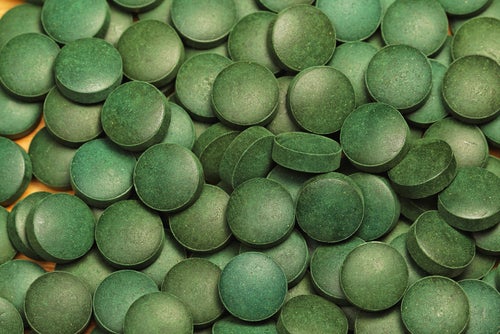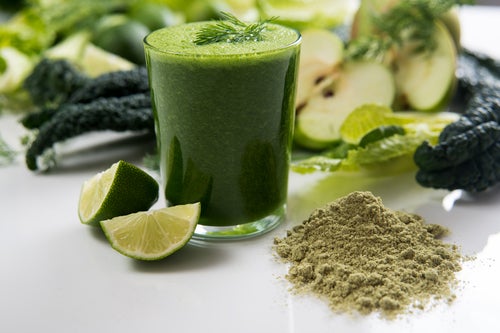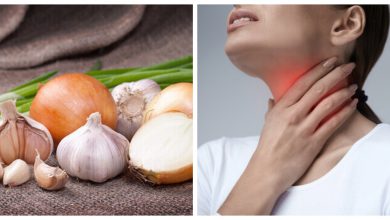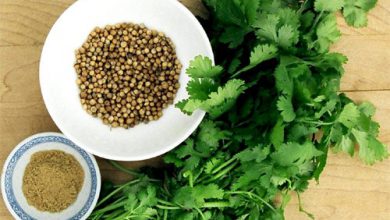Spirulina, A Food That Became Fashionable

Perhaps at first glance it is not too tempting. In fact, it has a very peculiar aroma and a characteristic intense green tone. However, beyond its somewhat strange or unfamiliar appearance, spirulina is considered a superfood.
For this reason, both the WHO (World Health Organization) and the UN (United Nations Organization) have recommended adding it to the diet as a food supplement.
As if this were not enough, NASA has included spirulina in the diet of its astronauts during their missions to space. This gives us an idea of the high nutritional value of this natural product.
Likewise, this food is frequently consumed by highly competitive athletes to improve their performance , as it is believed that it would help reduce recovery times and strengthen defenses.
What is spirulina?
Generally speaking, spirulina is said to be a blue-green algae that has a spiral shape. However, it could be that spirulina is not an algae itself, but another type of living organism. But regardless of its title, what may really interest us is that spirulina contains protein and other nutrients.
According to the US Department of Agriculture , in spirulina we can find vitamins A, B1, B2, B5, B6, folic acid, as well as vitamins E and H. It is also pointed out that spirulina could be a natural source of vitamin B12.
Spirulina: its properties
Spirulina is believed to have interesting health effects. In addition, it has a history of hundreds of years within human food. There are legends that say that she was part of the menu of some American civilizations such as the Incas and the Aztecs.
Spirulina as a dietary supplement

The excessive growth of the human population has led to the examination of unconventional food sources as a potential resource. The high protein content of Spirulina (5.92g / 100g) gives it a high nutritional value, although it is low in calories. (two)
Currently in the West these algae are used for other purposes, such as reducing appetite in obese patients (3). For this reason it is sold commercially as a dietary supplement. This is because it would have p-carotene, vitamins C, E, and some of the B group, mainly B6 and B12, in addition to all the essential and non-essential amino acids 6.
Spirulina is also rich in iodine, an effective component for stimulating the thyroid gland, accelerating metabolism and thus favoring a much faster processing of fats in our body. (4)
On the other hand, spirulina has a high content of Phenylalanine, an amino acid that would also help reduce the sensation of appetite , among its multiple functions in the human organism. (6)
Spirulina against aging
Another important aspect that you should know about spirulina is that it, according to a study by Oxidative Medicine and Cellular Longevity , includes antioxidant agents that help you stay young, as they delay the effects of aging.
When we say that spirulina contains agents with an antioxidant effect, this means that they cope with and reduce the negative effects of so-called free radicals, which are nothing more than highly reactive substances that accelerate the aging process, deteriorating our cells and tissues. Free radicals are produced by our own body.
However, one of the active components of spirulina, phycocyanin, exerts a powerful antioxidant effect that is capable of inhibiting these effects of free radicals. Specifically, this substance helps prevent DNA and cell damage.
Therefore, its consumption not only prevents skin aging, but also reduces the risk of diseases of cellular aging or associated with inflammatory processes.
How do you get it? How do you consume it?
Many people consume spirulina in capsules or powdered extract. You can also find it in hard, compact pills that you can buy in health food stores or herbalists that include natural-type products.
It is likely that, due to not knowing about its existence, you will never notice that perhaps in the drugstore on the corner or on an internet site where you buy other diet products you can also buy spirulina.
In shops such as herbalists, health food stores and health food pharmacies, you will surely be able to find it. Likewise, there is a large number of online stores that offer it among their health care products.

Spirulina is typically offered in a powder form that you can use to “color” your vegetable or fruit smoothies. You can also sprinkle it on salads that will undoubtedly be part of your diet if you try to incorporate healthy foods on a daily basis.
How much spirulina is recommended to consume?
Experts advise that it be consumed in doses of 3 to 5 grams per day in the case of children. You could gradually increase this daily dose until you consume 5 to 10 grams.
Even if you are looking to lose weight, you should not think that the more spirulina you consume daily, the more you will lose weight. As we know, and according to the proverb, “everything in excess is bad” and our body is only able to adequately assimilate a certain dose of spirulina each day.
Keep in mind that the weight loss process does not happen overnight and that you should not despair. It is important that you maintain the indicated doses and the amounts of food according to your physical conditions. Thus the results will be the best because you will reach the desired weight and you will stay healthy to fully enjoy it.
Finally, did you know that spirulina has been considered one of the “superfoods of the future” due to its properties? Consult with your doctor about the possible benefits of incorporating spirulina into your diet.









